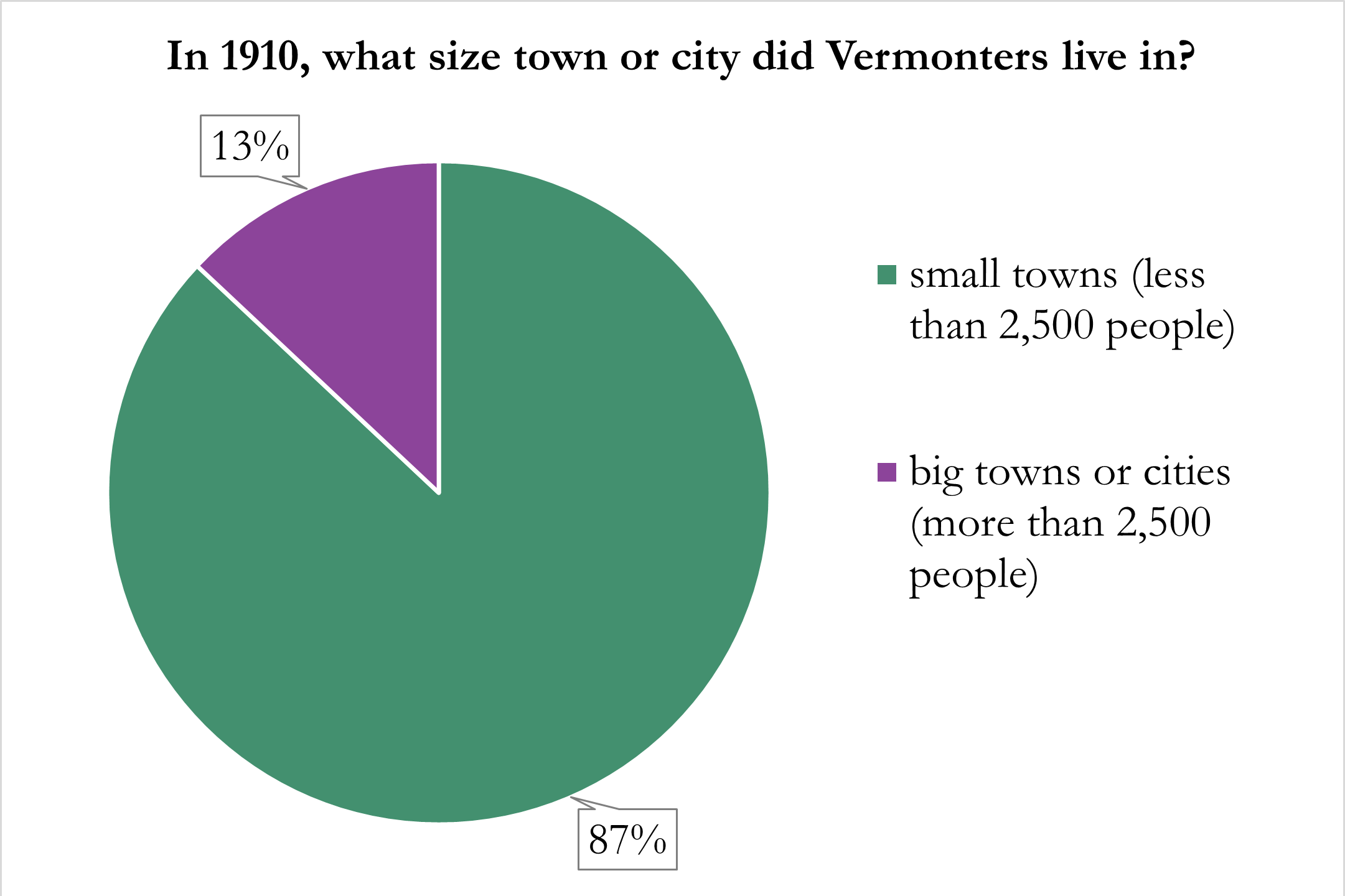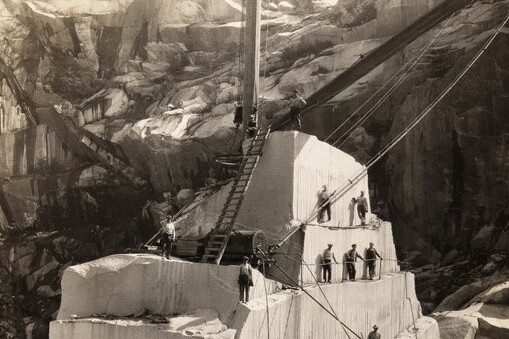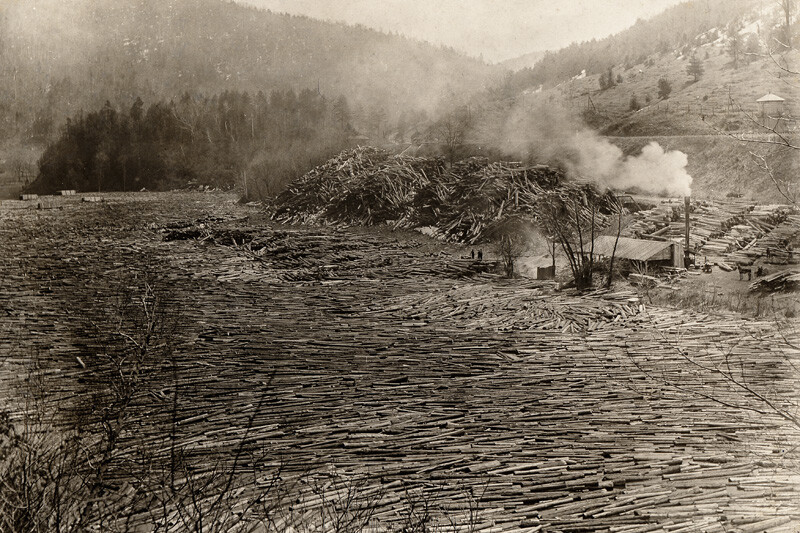1910s - The Land
How did Vermonters use the land in the 1910s?
In 1910, most Vermonters lived in rural(the country, not the city) areas or small towns. Only 32 towns or cities in Vermont had more than 2,500 people living there. But some towns were getting bigger. Colchester, St. Johnsbury, Barre and Rutland had much higher populations(numbers of people living in a place) in 1910 than in 1900. These towns had mills, factories and quarries.
Vermont had textile(cloth that is made by weaving) mills that made wool cloth. Many of these mills were built next to rivers. The mills used the water to power the machines. Factories in St. Johnsbury and Rutland made scales. The Estey Organ factory in Brattleboro made organs. Other factories made tools and paper. Some Vermonters left their farms in the country and moved to the cities to work in these factories. Other Vermonters came from Canada to work in the factories.
There were many butter factories in Vermont. These creameries(places for making butter or cheese) needed milk to make the butter. Farmers also shipped their milk to Boston on trains. Dairy farmers across the state had many cows on their farms. In 1910, Vermont had 3 cows for every 4 people in the state! Farmers grew grains like oats and corn to feed to their cows.
In the early 1900s, some Vermonters worked in quarries. They moved slate, marble and granite from the ground. In Barre, workers quarried granite. This was a dangerous job. Other workers shaped the granite into gravestones or monuments. Granite dust made this a dangerous job, too. When the carvers breathed in the dust, it damaged their lungs.
Vermonters also used trees that grew in the forests. Lumberjacks cut down the trees and floated the logs down rivers. In the early 1900s, some Vermonters worried that too many trees had been cut down. The trees kept soil on the hills and mountains. Without trees, the rain washed the soil into streams and rivers.
The Vermont government began to preserve(save or protect) forests and plant trees. James P. Taylor started the Green Mountain Club in 1910. He thought if people went hiking in the woods, they would help save the trees and the mountains. The Green Mountain Club decided to build a hiking trail through Vermont. They called it the Long Trail.
Vermonters used the land in many different ways in the 1910s.
Thinking About History
Historians ask questions to think deeply about history.
How can Vermonters use natural resources wisely?
Is farming a wise use of the land? Is logging a wise use of the land?
Learn More
Follow the links below to explore related topics.
Read the article Farmer's Gold from Green Mountaineer Magazine
Read the article Footpath in the Wilderness from Green Mountaineer Magazine
How has Vermont's landscape changed? Explore historic photographs from the Landscape Change Program
Read the article Your Town in the Future from Green Mountaineer Magazine
Watch the video Winooski Mills from This Place in History
Watch the video The Long Trail from This Place in History
Copy and paste this citation to show where you did your research.
Vermont Historical Society. "1910s - The Land." Vermont History Explorer. Accessed December 29, 2025. https://vermonthistoryexplorer.org/land-use-in-the-1910s


